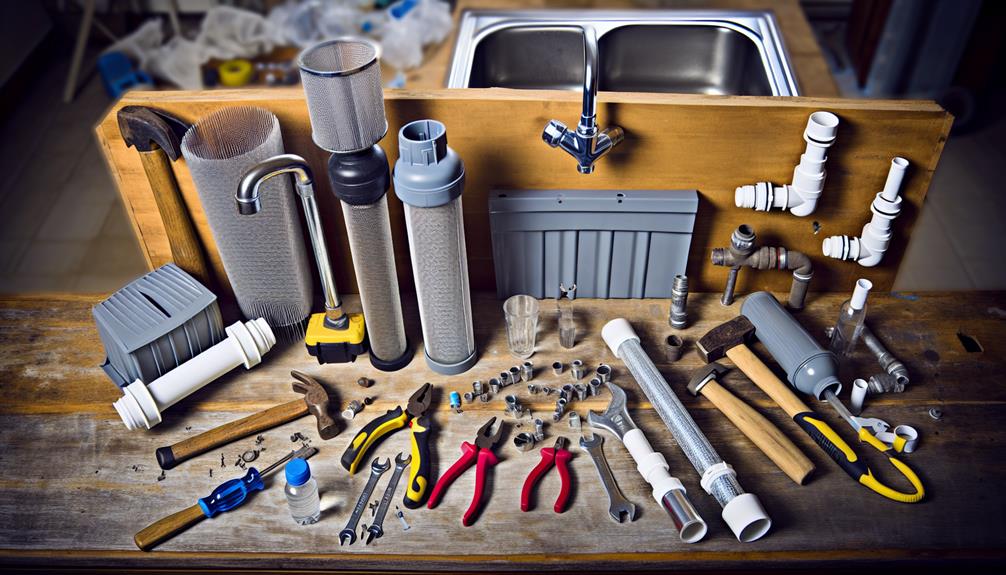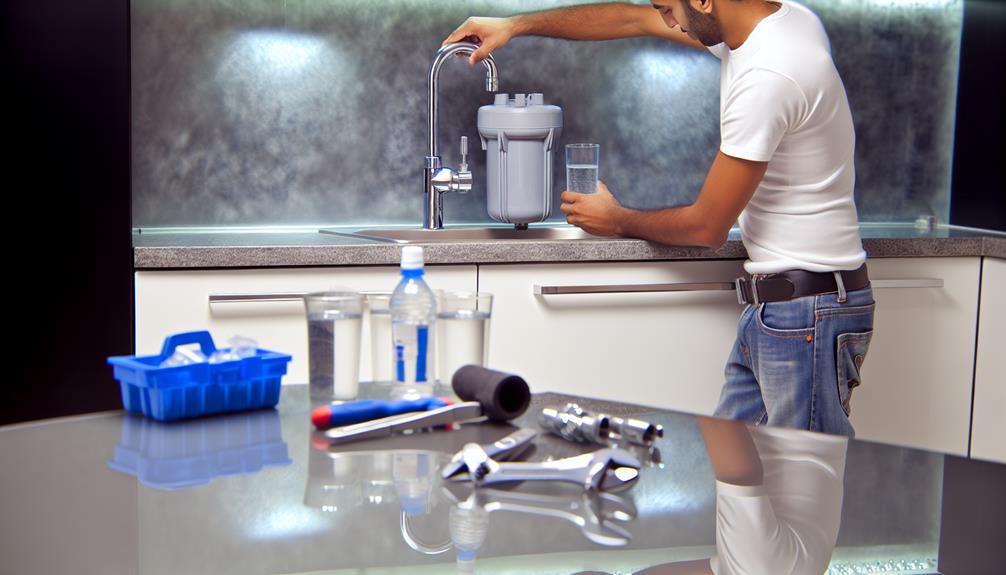Like a well-oiled machine, your reverse osmosis system requires regular check-ups to ensure it runs at peak efficiency. You've invested in this advanced water purification technology to provide your home or business with clean, safe water, but neglecting routine maintenance could lead to a host of issues.
Contaminant buildup, filter degradation, and membrane fouling can all compromise the system's performance, subtly at first, then more noticeably over time. As you consider the implications of letting maintenance slide, you'll soon discover that the longevity and reliability of your system hinge on these regular interventions.
There are pressing reasons why staying on top of your system's upkeep is more than just a good practice—it's essential for uninterrupted access to high-quality water. So, what happens if you don't? Let's explore the unseen risks and hidden costs that could be lurking in your water supply.
Importance of Regular Maintenance
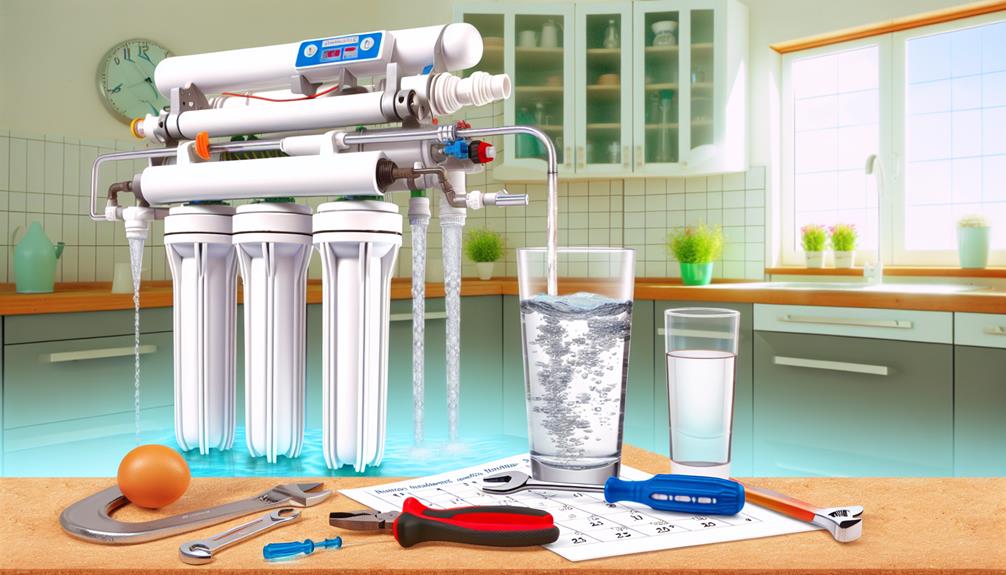
Ensuring the longevity and optimal performance of your reverse osmosis system hinges on consistent and thorough maintenance. You can't afford to overlook the significance of adhering to a strict maintenance schedule. Routine checks play a pivotal role in preempting malfunctions that could disrupt the system's efficacy or, worse, lead to a complete breakdown.
A meticulously crafted maintenance schedule is the cornerstone of a well-functioning reverse osmosis system. By systematically following this timetable, you'll not only extend the lifespan of the system but also uphold the quality of the water it produces. Regular replacement of filters, for instance, is crucial; a clogged or worn-out filter impedes water flow and contaminates the purity of the output.
Moreover, the membrane, the heart of the system, demands close attention. You must ensure it's free from scaling and fouling, which can drastically reduce its selective permeability. Remember, a compromised membrane equates to compromised water quality.
In essence, the analytical approach to your system's maintenance – marked by precise, technical assessments and timely interventions – is non-negotiable. By instituting routine checks and adhering to a maintenance schedule, you're not just investing in the system's functionality; you're safeguarding your investment and ensuring its optimal performance.
Enhancing Water Purity Levels
As you adhere to the recommended maintenance schedule, you'll not only preserve the system's functionality but also enhance the purity levels of the water it produces. Regular servicing is critical to prevent contaminant buildup, which can compromise both the taste and safety of your water.
Over time, filters lose efficacy due to the accumulation of particles and impurities. By proactively replacing filters and membranes, you ensure that your reverse osmosis system operates at its optimal performance level, consistently delivering water of the highest purity.
Here are key actions to maintain water purity:
- Regularly replace pre-filters and post-filters to prevent the passage of sediments and chlorine that can damage the RO membrane.
- Inspect and clean the RO membrane to remove any obstructive residue, maintaining its ability to effectively remove contaminants.
- Sanitize the system's components to eliminate microbial growth that could affect water quality.
Adhering to a strict maintenance regimen mitigates risks associated with filter efficacy degradation and contaminant buildup. It's essential to understand that the quality of the water produced by your reverse osmosis system is directly proportional to the attention and care you invest in routine maintenance.
Extending System Lifespan
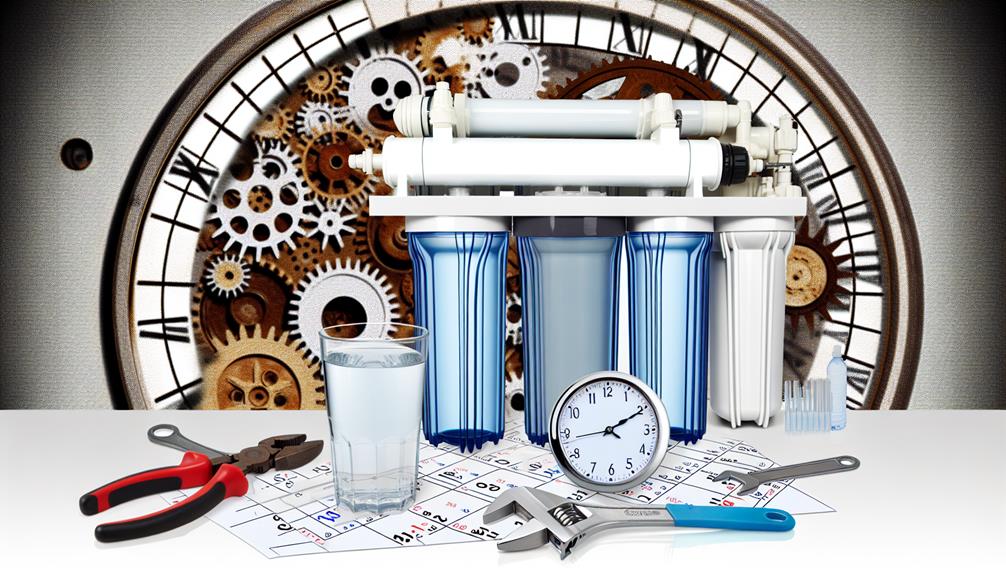
To extend the lifespan of your reverse osmosis system, diligent maintenance is imperative, involving timely filter replacements and regular inspections of critical components. This technical vigilance ensures the efficiency and longevity of your system, mitigating wear and tear through proactive measures.
Filter replacements are foundational to maintaining a reverse osmosis system. Sediment and carbon filters must be replaced periodically to prevent clogging and degradation of the system's performance. Membrane care is equally pivotal; the reverse osmosis membrane is the heart of the system, and its well-being dictates overall functionality. Adhering to a strict replacement schedule minimizes the risk of membrane fouling and ensures optimal water purity.
The table below outlines a maintenance timeline for key components:
| Component | Inspection Frequency | Replacement Frequency |
|---|---|---|
| Sediment Filter | 6 months | 6-12 months |
| Carbon Filter | 6 months | 6-12 months |
| RO Membrane | 6 months | 2-3 years |
| Storage Tank | Annually | As needed |
| System Housings | Annually | As needed |
Adhering to the specified frequencies can significantly extend the system's lifespan, ensuring that your investment operates at peak efficiency for years to come.
Preventing Costly Repairs
Why risk incurring expensive repairs when regular maintenance can prevent them in the first place? Adhering to a strict maintenance schedule is crucial to ensure the operational reliability of your reverse osmosis system. By carrying out routine inspections and cleanings, you're proactively identifying and addressing minor issues before they escalate into major problems that could halt your system's operation and lead to costly downtime and repairs.
Consider the following key points to safeguard your system:
- Regular Filter Replacements: Clogged or worn-out filters can lead to reduced water quality and flow rates, stressing other components and potentially causing system failure.
- Timely Membrane Cleaning: The semi-permeable membrane is the heart of your reverse osmosis system. Without proper cleaning, scaling and fouling can reduce its efficiency, leading to higher operating pressures and premature membrane replacement.
- Systematic Monitoring: Keep a close eye on system performance indicators such as pressure, flow rates, and water quality. Deviations from normal ranges may signal an impending issue that requires immediate attention.
Ensuring Efficient Performance
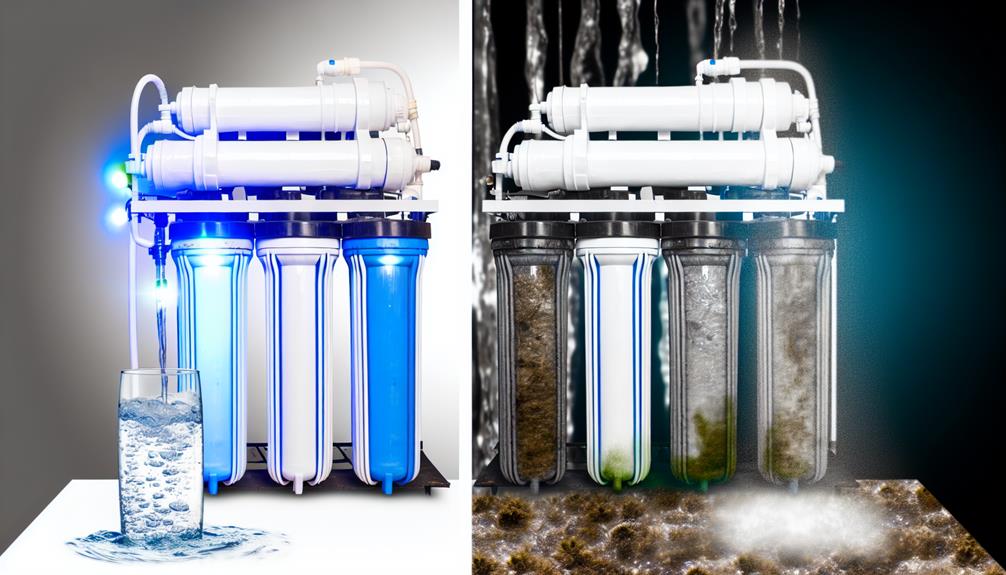
Maintaining your reverse osmosis system not only prevents costly repairs but also ensures its efficient performance, which is critical for consistent production of high-quality purified water. Efficient performance hinges on the maintenance of optimal pressure within the system.
Without it, you'll notice a significant decline in the system's ability to filter water effectively. Optimal pressure is the force that drives water through the semi-permeable membrane where the purification process occurs. If the pressure is too low, water moves sluggishly through the system, leading to inadequate filtration and wasted water. Conversely, excessive pressure can damage the delicate membrane, precipitating a drop in system efficiency and water quality.
Membrane care is paramount for sustaining performance. The membrane is the heart of your reverse osmosis system; neglecting it can lead to reduced water quality and flow rate. Regular cleaning and timely replacement prevent the build-up of contaminants that can clog and degrade the membrane.
Conclusion
In conclusion, you must maintain your reverse osmosis system regularly to safeguard its performance. Proper upkeep boosts water purity, prolongs the system's life, and averts expensive repairs.
By being proactive, you ensure the system operates efficiently, preventing the gradual decline that leads to system failure. Remember, consistent maintenance isn't just a recommendation—it's a necessity for the longevity and reliability of your water purification investment.
